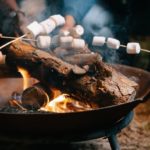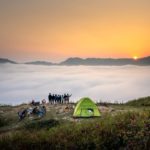Whether camping in the summer or during the winter, a fire is one of the obligatory things you will need to have a successful trip. Fires are not used only to warm up – they are great for cooking food, provide enough light, and are a good way to keep wild animals away. So, you must know how to light one.
Starting a fire is not always the easiest, especially if you have never done it. But what is even more difficult is starting a fire using wet wood. If you do not know what you are doing, there is little chance of you starting a successful fire.
But there is no need to worry – I am here to tell you some helpful tips and tricks for starting a fire with wet firewood. You will have to memorize a few steps before you go on your next camping trip, so make sure you read my guide with the utmost attention. With that being said, let’s get started with the guide!
More...
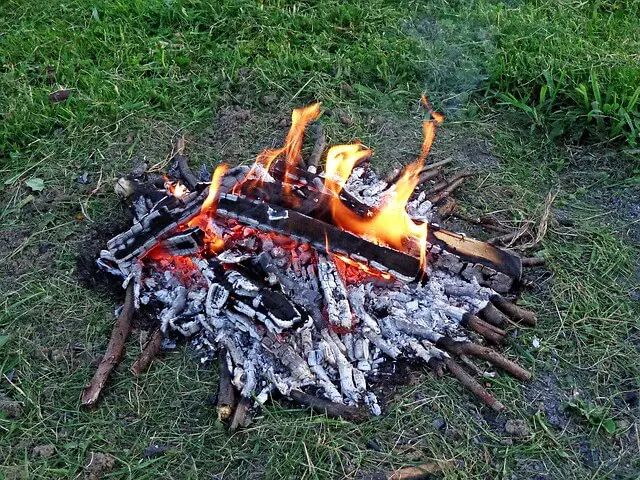
Table of Contents
How Do You Set Fire to Wet Wood?
Setting fire to wet wood is not easy, but it is possible. The best thing would be to start by getting some dead branches or small twigs that you can use to get the fire going. You can get them from dead trees if there are any around the campsite.
Another important thing is to have fire starters to get the wet wood burning. You can get a roaring fire in a few minutes if you have everything at your disposal. Then, you should try your best to get the damp wood to dry.
There will be a step-by-step guide explaining how to start the fire and a few ideas on how to dry wet wood listed below. So, if you want to know more information about these specific topics, make sure to stay tuned.
Can You Burn Wet Wood in a Fire Pit?
You can always use a fire pit to burn wet wood, but you will have to make sure that the inside of the fire pit is dry. That dry, controlled environment will allow the wood to catch fire more easily.
But starting a fire with wet wood is not always a good idea. Even if you want to put in the effort, the amount of heat you can get from the fire will be questionable. What’s more, the fire will produce quite a lot of smoke and make it uncomfortable for you to be around it. So, consider these things before starting your fire with wet wood.
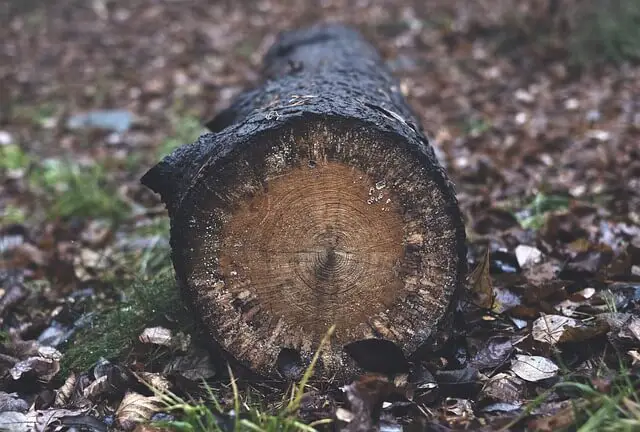
How Can I Light a Fire with Wet Wood? [Step-By-Step]
Lighting firewood is easier said than done. There are many things to think about – the tinder you will use, the place where you will be lighting the fire, and the effort to keep the fire burning. But the effort pays out in the end as you get an actual burning fire even with the firewood you thought was unusable.
Having started such fires many times before, I have created a little guide on lighting a fire with wet firewood. It has been successful for me thus far, so it might be successful for you too. If you choose to follow my guide, here is what you will need to do:
Step 1 – Think about the position
Let’s presume that everything on your campsite is soaked – the ground, the trees, the rocks. This will make it difficult to start a fire because you cannot set it on wet ground. You will need to make a bed for the fire before attempting to start it.
If there are any smaller rocks you can gather, please do that. Then, find a place where water cannot get to the fire. It can be under a cliff but should not be close to any living trees. You do not want to catch them on fire.
After you find the perfect spot, use the small rocks you gathered to make the fire bed. Make sure to leave space around the rocks, as the fire will need air to stay lit. Smaller ventilation holes will come in handy.
Step 2 – Gather sticks and smaller logs
If all available firewood is wet, you will need to gather some smaller sticks and logs to start a smaller fire and then dry the firewood. Make sure that the sticks come from old trees that are no longer living. To see if the sticks are dry, you can remove a layer of their bark and check their base.
Small twigs, tree branches, pine needles, dry leaves, or grass are all things you can use to start a fire. These things are also known as kindling, so do not be confused if someone calls them by that name.
Step 3 – Prepare the tinder for the fire
If there are any smaller logs with wet barks, you can remove the bark and use the dry part of the log to start the fire. This is where a sharp pocket knife or camping knife can come in handy. If you have one, that will be great. But if you do not, you will have to resort to other options.
Dry finding a stick that has at least one sharp end. Using that stick, you can try to chip away the bark or the layer of the log that is wet. Once you do this to all smaller logs, you can move on to the next step.
Step 4 – Set the log formation
With your kindling and tinder all prepared, you can start setting up for the actual fire. Get to the fire pit you created and start arranging the tinder and kindling. I recommend setting them in a tepee formation, as getting the fire started like that is quite easy.
Step 5 – Get something flammable
After you have the fire set up, you will need to think of a fire starter you can use. This is in case the kindling does not easily catch on fire. That can happen, especially if there is still a lot of moisture in the branches and sticks.
So, a backup option can come in handy. If you have a cloth or cotton balls, you can get some Vaseline on them and put them in the middle of the tepee. You can also use dry papers, clothes you do not need, or even duct tape rolls. All these options are highly flammable, so they act as good fire starters.
Step 6 – Start the fire and prepare the wet firewood
At this point, you can try starting your fire. Make sure oxygen flows to the fire as you need air to start it. Then, you will also need some matches or anything you can use to get the fire going.
As soon as you see a bit of flame, try blowing into the fire pit to get wood to catch fire. Dead branches should be able to catch fire fast, so you should have something to work with at this point.
Step 7 – Keep the fire going by adding new logs
As a final note, I want to say that once you get the fire started, you should continuously add the driest logs you have to keep it going. As for the remaining wet logs, try positioning them close to the fire so they can dry from the flames. You can add them to your fire if you consider them dry enough.
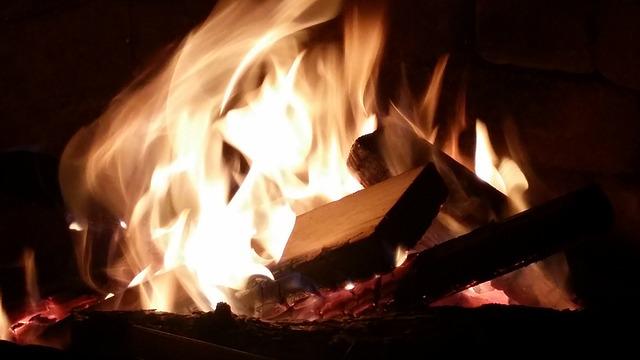
Is It Illegal to Burn Wet Wood?
Several countries have made it illegal to burn wet wood. The reason is that wet wood releases pollutants into the air when burnt. To protect air quality and prevent air pollution, you should not start a fire with wet wood.
Should wet wood be your only option, it would be best if you check with the authorities in the area where you are camping before using them. They will tell you if it is prohibited to start a fire using such wood or if there are no restrictions.
How Do You Dry Firewood Quickly?
There are a few convenient ways to dry firewood quickly if you are on a campsite and desperately need some dry logs. Here are some ideas you can try out:
Cover the logs – the first and easiest thing you can do is cover the logs. You should not let the logs get soaked if it rains outside. Add something to protect them or move them into a place where water will not be able to get to them.
Allow airflow – when you arrange the wet wood, you will need to make sure that there is ventilation between the logs and in the place where they are located. In wet conditions, they will not be able to get dry on their own. You must place them in a place where the wind will be able to get to them and start to dry them.
Keep off the wet ground – Remember not to leave the wet wood on wet ground as it will only get wetter. You might cause the entire log to become wet, not only the tree bark if you leave them lying on the cold, wet ground. So, when arranging the logs, place them off the ground, on stones, or some larger dry logs.
Use the sun – if there is a sunny spot where you can place the wet logs, you should use it. You should put all wet logs or wet kindling around in the sunlight and leave it to dry.
Make smaller logs – smaller logs will be much easier to dry and dry a lot faster. So, if you have an ax available, consider splitting the logs and even removing the wet outer layer to make the log dry faster.
How Do You Know If Wood Is Dry Enough to Burn?
Dry wood is easy to differentiate from wet wood. But if you are new to the topic, you might not know the difference between the two. A few things can help you decide if the wood is dry enough to burn, starting with the wood’s appearance.
It is dry if your log looks less vibrant than you would expect it to. When the inner wood is still moist, it has a vibrant brown color that you cannot miss. Also, it has a strong smell that can attract people.
Once the wood is dry, the vibrant colors and the strong smell will no longer exist. Instead, there will be cracks throughout the log that make the log look old and worn out. The bark will be peeling off, or if it is not, you will be able to peel it off without much effort.
These are only some things that will help you differentiate a dry from a wet log. A final note I would like to make is that dry firewood is lightweight. When you take a wet log in your hands, you will immediately notice that it is quite heavy. So, if your logs are still a bit heavy to the touch, you should let them dry further.
Wrap-Up
Thank you for sticking with me through this guide on starting fires using wet wood only. I hope that you learned a lot about the best wood drying practices and how to start the actual fire when you need it. Remember that burning wet firewood is prohibited in some countries, so check the laws and regulations in the country where you are camping.
Do you know any other helpful tips on lighting fires when you do not have dry wood available? If you do, please share them in the comments below, and I will make sure to read them as soon as possible!
- Are Merrell Shoes Good? – An Unbiased Review of Merrell Footwear - December 9, 2023
- Where Are Merrell Shoes Made? - December 9, 2023
- Camping in 40-degree Weather: Tips and Tricks - September 25, 2023

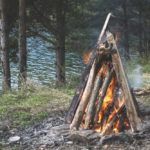
![Best Wood for Campfires [Everything You Need To Know] Best Wood for Campfires [Everything You Need To Know]](https://grandcircletrails.com/wp-content/uploads/2021/11/Best-Wood-for-Campfires-1-150x150.jpg)
![How to Put Out a Fire without Water? [Guide] How to Put Out a Fire without Water? [Guide]](https://grandcircletrails.com/wp-content/uploads/2022/03/How-to-Put-Out-a-Fire-without-Water-2-150x150.jpg)
